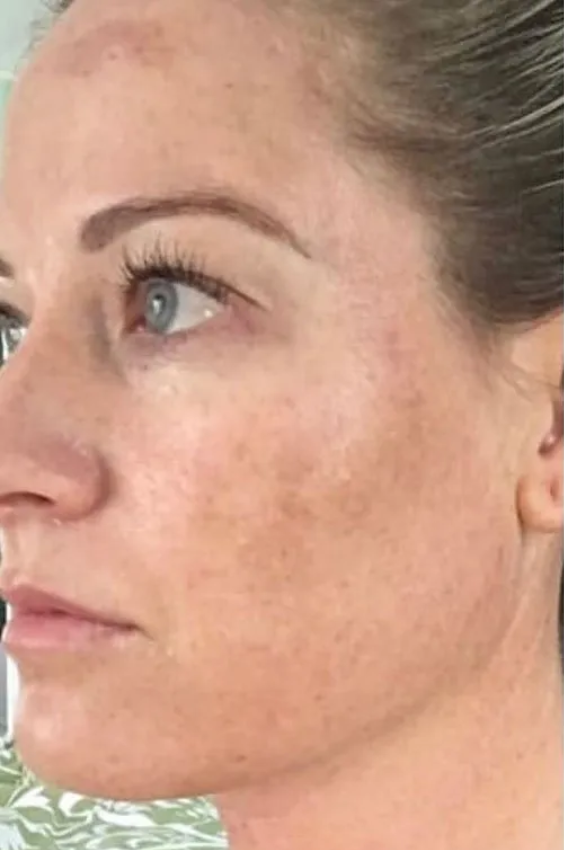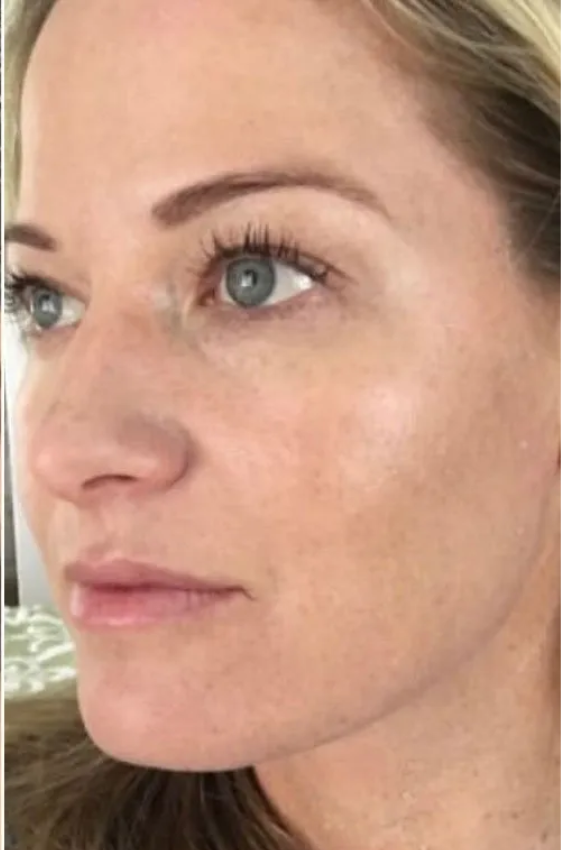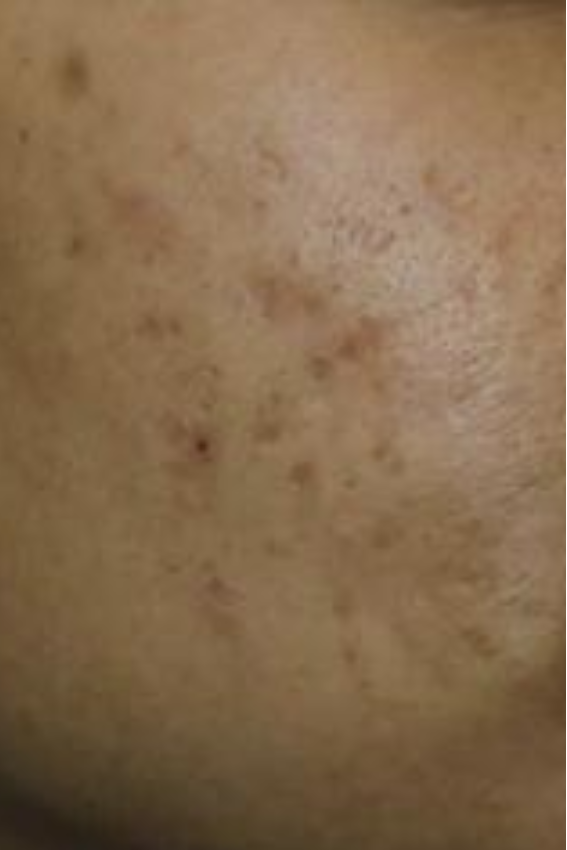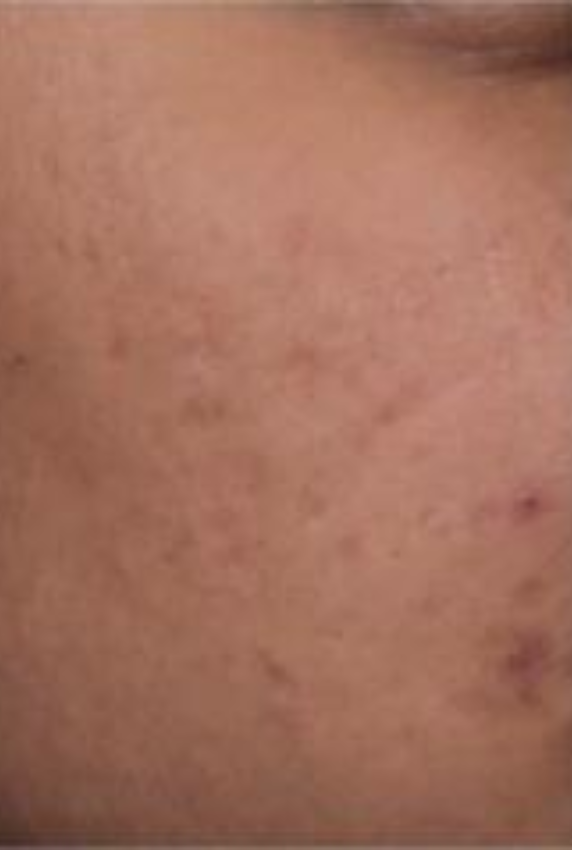Chemical Peels
Revitalize Your Skin
Chemical peels are advanced skin treatments that exfoliate the outer layers of the skin, promoting cell turnover and revealing a smoother, more radiant complexion. We offer a variety of chemical peels tailored to address specific skin concerns:
- Vivier Jessner’s Peel: A medium-depth peel with 14% lactic acid, 14% salicylic acid, and 14% resorcinol. Perfect for targeting hyperpigmentation, fine lines, acne, and uneven texture.
- Vivier Peel (Glow Peel): A gentle option with 10% lactic acid, 2% salicylic acid, and 14% resorcinol. Ideal for brightening and refreshing the skin.
- Script Jessner’s Peel: Similar to Vivier Jessner’s, providing controlled exfoliation for improved tone and texture.
- European Peel: A superficial peel designed to rejuvenate the skin, reducing minor imperfections while enhancing overall radiance.
-
Customizable
Tailored to your specific skin type and goals.
-
Effective
Chemical peels improve skin texture, tone, and clarity with lasting effects.
-
Targeted
Treats a wide range of concerns, from pigmentation and fine lines to acne and rough texture.
Starting at: $165
Reveal Radiant, Healthy Skin
At Sensei Medical Aesthetics, we specialize in professional chemical peels that deliver dramatic results while prioritizing your skin’s health.
During a chemical peel treatment, a specially formulated solution is applied to your skin to exfoliate the outer layers and promote cell turnover. The process typically takes 30–60 minutes, depending on the depth of the peel and the treatment area.
You may experience a mild tingling or warming sensation during the procedure, which subsides quickly. After the peel, your skin may appear red and feel sensitive, similar to a mild sunburn. Peeling and flaking are common for a few days as your skin regenerates.
Results, including smoother texture and a brighter complexion, are noticeable within a week. Depending on your skin concerns, multiple treatments may be recommended to achieve optimal results.
Number of Treatments: The number of chemical peel sessions required depends on your skin concerns and the depth of the peel. Superficial peels may require 4–6 sessions spaced 4+ weeks apart, while deeper peels may achieve desired results in just one session with longer recovery times.
Results Timeline: Results vary by peel type. Superficial peels often deliver visible improvements in skin texture and tone within a week, while medium or deep peels may show dramatic results over several weeks as new, healthier skin emerges.
Maintenance: Periodic maintenance peels can help sustain results, especially for ongoing concerns like acne or pigmentation. Your provider will recommend a schedule based on your skin’s needs.
Downtime: Depending on the peel, downtime can range from none (for superficial peels) to a week or more (for medium or deep peels). Peeling, redness, or dryness may occur as your skin regenerates.
- Dermaplaning: Prepares your skin by removing dead cells for enhanced laser penetration.
- LED Light Therapy: Promotes healing and reduces inflammation post-treatment.
- Avoid Sun Exposure: Limit sun exposure and avoid tanning beds for at least four weeks before treatment to reduce the risk of complications.
- Discontinue Certain Skincare Products: Stop using products containing Retin-A, retinol, glycolic acid, salicylic acid, and alpha hydroxy acids 5-7 days prior to the procedure to reduce skin sensitivity.
- Medical History: Inform your provider about any medical conditions, medications, or previous treatments, including any history of cold sores or skin conditions.
Disclaimer: This list is not comprehensive. Detailed pre- and post-procedure guidelines will be emailed to you before and after your treatment.
- Sun Protection: Apply a broad-spectrum sunscreen with SPF 30 or higher daily to protect the treated area from UV damage.
- Skincare Routine: Use gentle, non-irritating skincare products, and avoid exfoliants or active ingredients like retinoids until your skin is fully healed.
- Hydration: Keep your skin hydrated with a soothing moisturizer and drink plenty of water to support the healing process.
- Monitor Skin Response: Redness, swelling, and peeling are normal. If you experience excessive discomfort, blistering, or unusual reactions, contact our clinic immediately.
Disclaimer: This list is not comprehensive. Detailed pre- and post-procedure guidelines will be emailed to you before and after your treatment.
BEFORE YOU BOOK
Avoid booking a chemical peel if you are pregnant, breastfeeding, or have an active skin infection, open wounds, or severe rosacea in the treatment area. If you have a history of keloid scarring, cold sores, or certain medical conditions such as autoimmune disorders, consult with our providers before scheduling. Recent use of isotretinoin (Accutane), retinol, or other exfoliating products may require a waiting period—please discuss this during your consultation.
For your safety and to achieve optimal results, it’s crucial to disclose your full medical history, current medications, and recent skin treatments during your consultation.
Pre-Treatment requirements
This treatment requires a consultation prior to booking.
If you have questions, please give us a call at 250-768-5355, send us an email at info@senseimedicalaesthetics.com, or book in for a complimentary consultation!




FAQ
A chemical peel is a skin resurfacing treatment designed to improve the texture and appearance of your skin. During the procedure, a specialized chemical solution is applied to the skin to exfoliate the outermost layers, promoting cell turnover and revealing fresh, smoother, and more radiant skin underneath.
Chemical peels are suitable for individuals looking to improve the overall health and appearance of their skin. You may be a good candidate if you:
- Have concerns such as fine lines, wrinkles, uneven skin tone, acne scars, or sun damage.
- Are in generally good health and have no active skin infections or conditions that could affect healing.
The level of discomfort during a chemical peel depends on the type and strength of the peel.
- Light Peels: Typically cause mild tingling or a slight stinging sensation that subsides quickly.
- Medium Peels: May cause more noticeable stinging or a warm sensation during the treatment.
- Deep Peels: Can be more uncomfortable.
The number of chemical peel treatments required depends on your skin goals and the type of peel:
- Light Peels: Often performed in a series of 3 to 6 treatments, spaced 2 to 4 weeks apart, for optimal results.
- Medium Peels: Typically require 1 to 2 sessions, spaced several months apart, depending on the desired outcome.
- Deep Peels: Usually a one-time treatment with long-lasting results, though maintenance with lighter peels may be recommended over time.
Downtime for chemical peels varies depending on the type of peel performed:
- Light Peels: Minimal downtime. You may experience slight redness or mild flaking for 1 to 3 days.
- Medium Peels: Moderate downtime. Expect redness, peeling, and sensitivity for 3 to 7 days.
- Deep Peels: Significant downtime. Redness, swelling, and peeling may last 1 to 2 weeks, with residual redness fading over several weeks.
Yes, chemical peels pair well with treatments like BELA MD+ or LED therapy to enhance results and accelerate recovery.